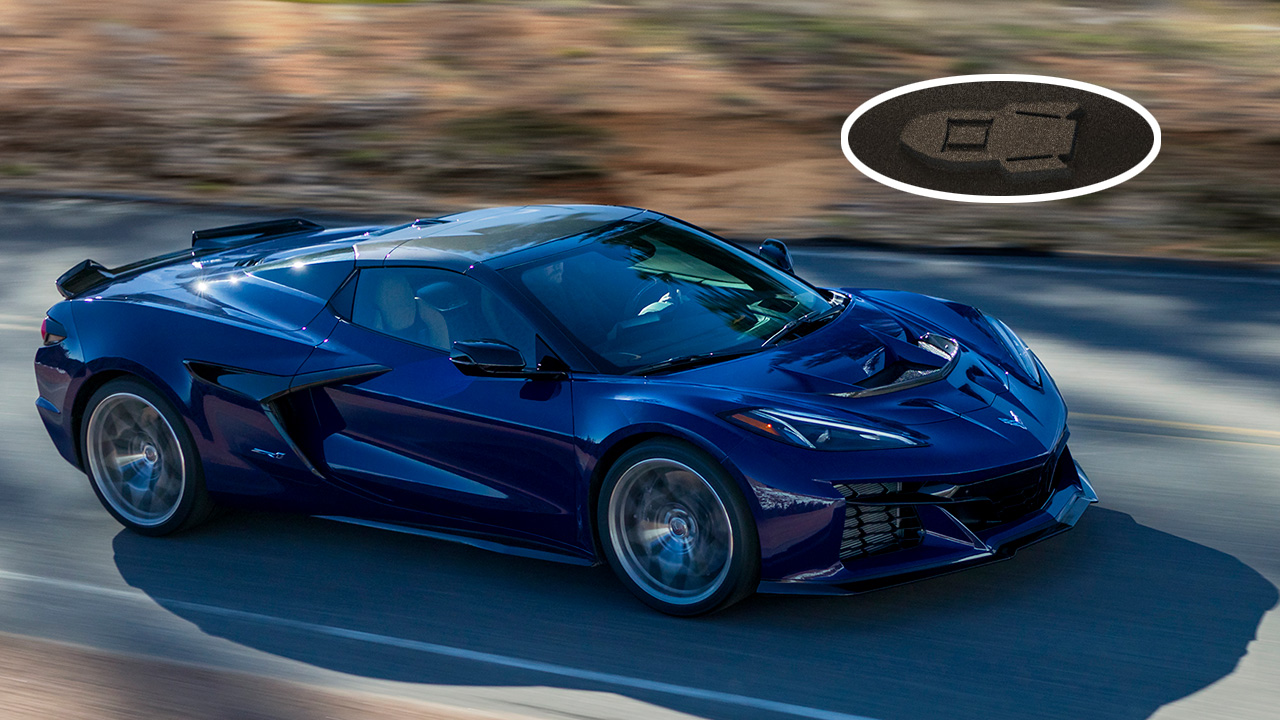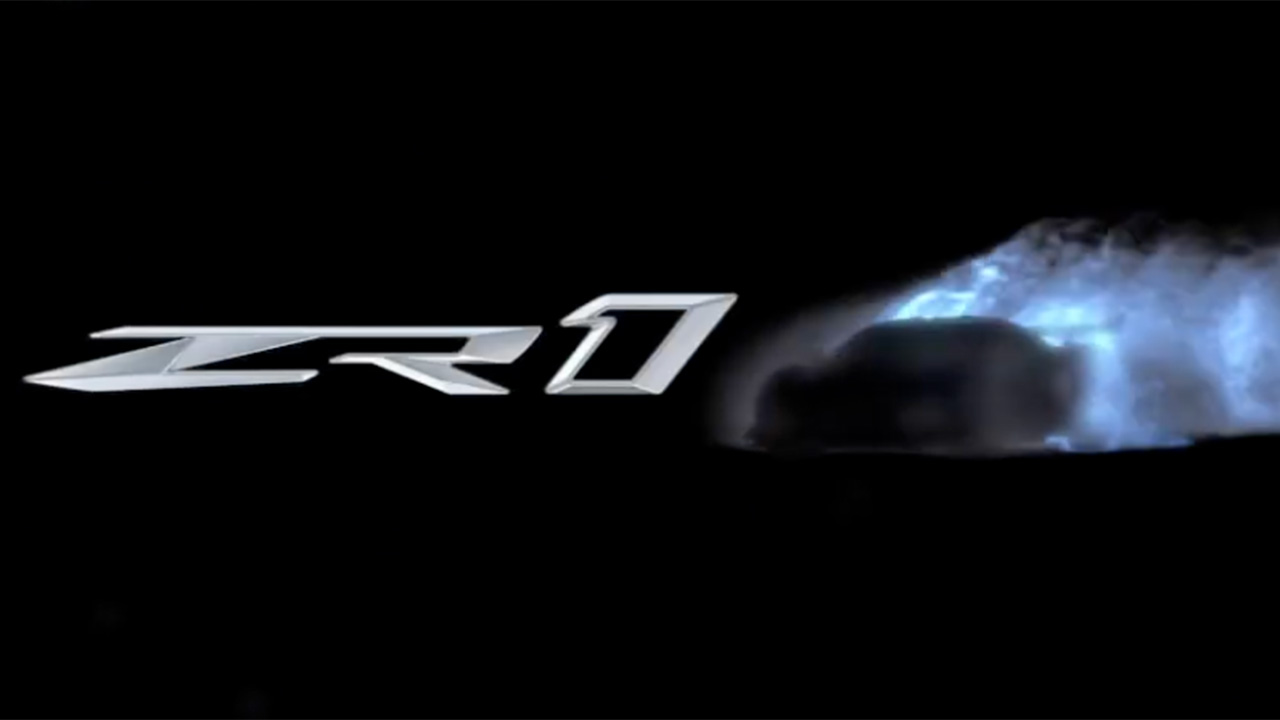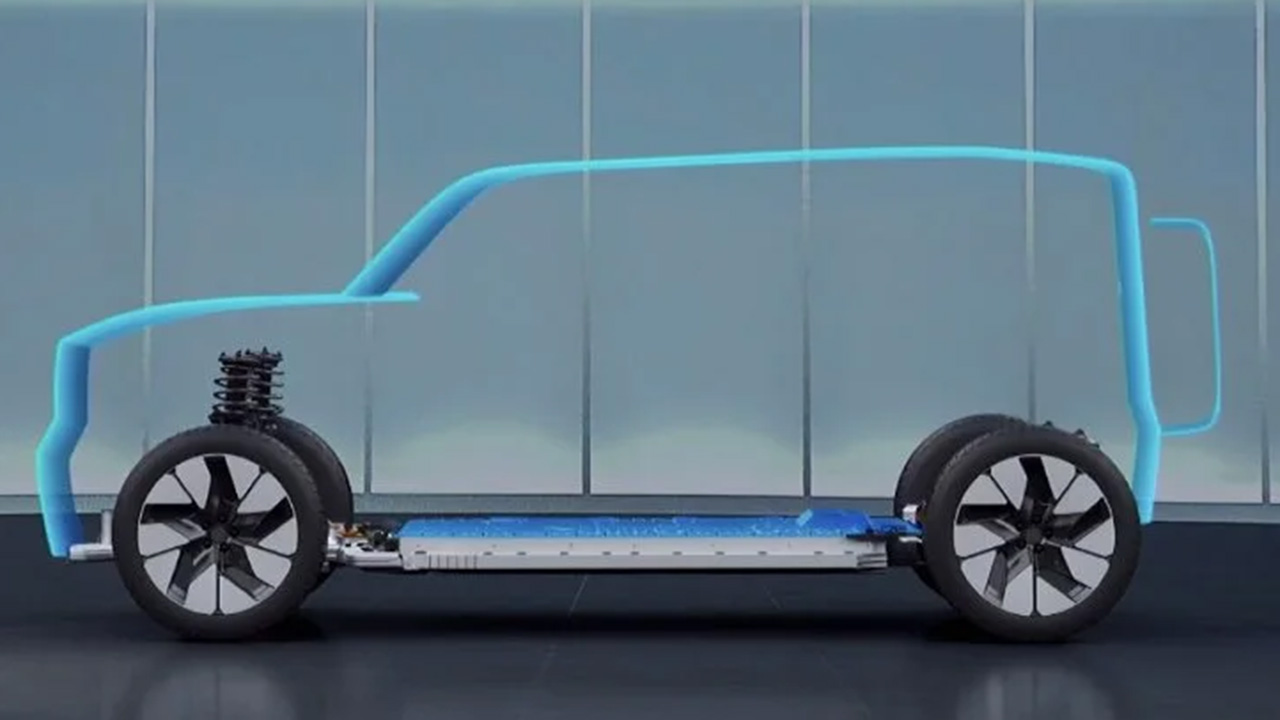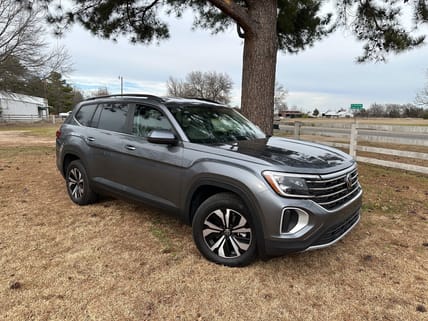The 212-MPH, 755-HP Corvette ZR1 Is a Street-Legal, Track-Ready Monster
We hit the track in the fastest Vette ever.
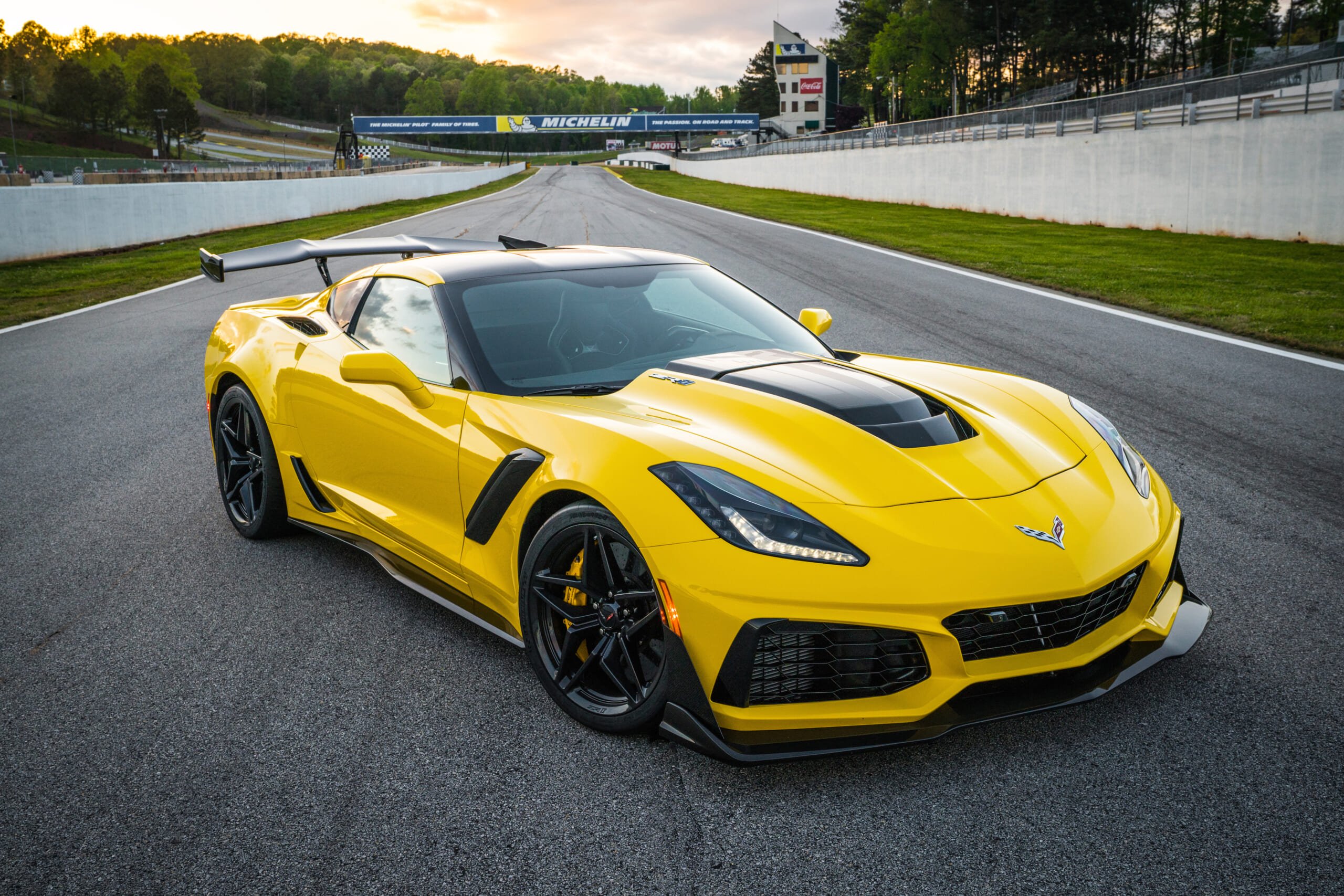
With the 2019 ZR1, the Chevrolet Corvette has ascended to the ranks of the genuinely fire-breathing super-sports cars, joining the rarefied likes of the McLaren P1 and the Lamborghini Aventador (one of which infamously caught itself on fire!).
Chief engineer Tadge Juechter showed us a photo of the car’s blue-tinted breath as proof.
But its fire-breathing case is equally strong in the metaphorical sense as well, because the bellowing 755-horsepower supercharged 6.2-liter small block V8 beast is now the loudest car sold in America, according to the engineers who worked on it.
The ZR1’s gut-shaking rumble, combined with its race-spec carbon fiber aerodynamic bits and shockingly fat Michelin tires project an aura of seriousness that is difficult to match in a street legal vehicle. Maybe the Viper was as intimidating, but even that wasn’t as fast as the new ZR1.
The ZR1 is so fast that it made the Z06 Corvettes on hand look slow by comparison. As it might well, with its 110-horsepower advantage over them. But still, the Z06 is seriously fast in its own right, so it is surprising to see it so comprehensively beaten.
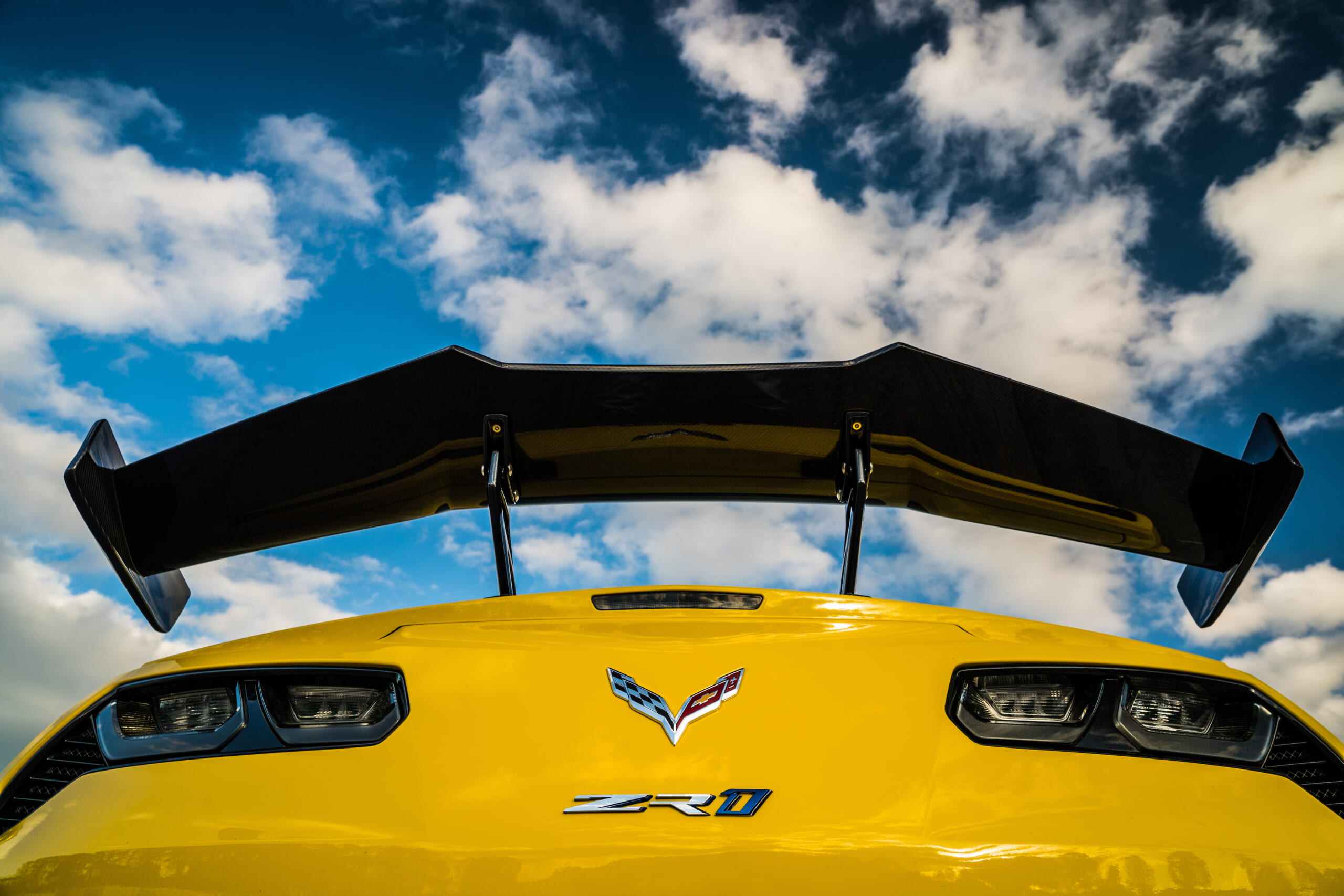
Here’s why. The ZR1 has a bigger 2.56-liter supercharger with an updated, more efficient design that moves more air into the engine. It also has a big black carbon fiber wing bolted through massive braces directly to the frame and looking for all the world like Batman’s own Bat-boomarang.
There’s another one too, invisible beneath its front bumper to balance the rear wing. They combine to produce 950 lbs. of traction-enhancing downforce at speed without increasing drag compared to the Z06.
That means a track-proven two-way average top speed of 212 mph. The car went faster than that on one pass, as will the production cars depending on any wind or slope of the road.
But the ZR1 is electronically limited to 215 mph because that’s Michelin’s certification for the Pilot Sport Cup 2 tires that are pretty much racing slicks for the street. The tires are actually the exact same ones as on the Z06, with only half-inch wider front wheels making a small change to their behavior.
Chevy wisely upgraded the ZR1’s Brembo brakes, with the six-piston front calipers squeezing the biggest brake pads I’ve ever seen on the 15.5 inch carbon ceramic rotors. The rotors are made by a new process that improves their ability to conduct heat away, resulting in a 150-degree reduction in brake temperatures.
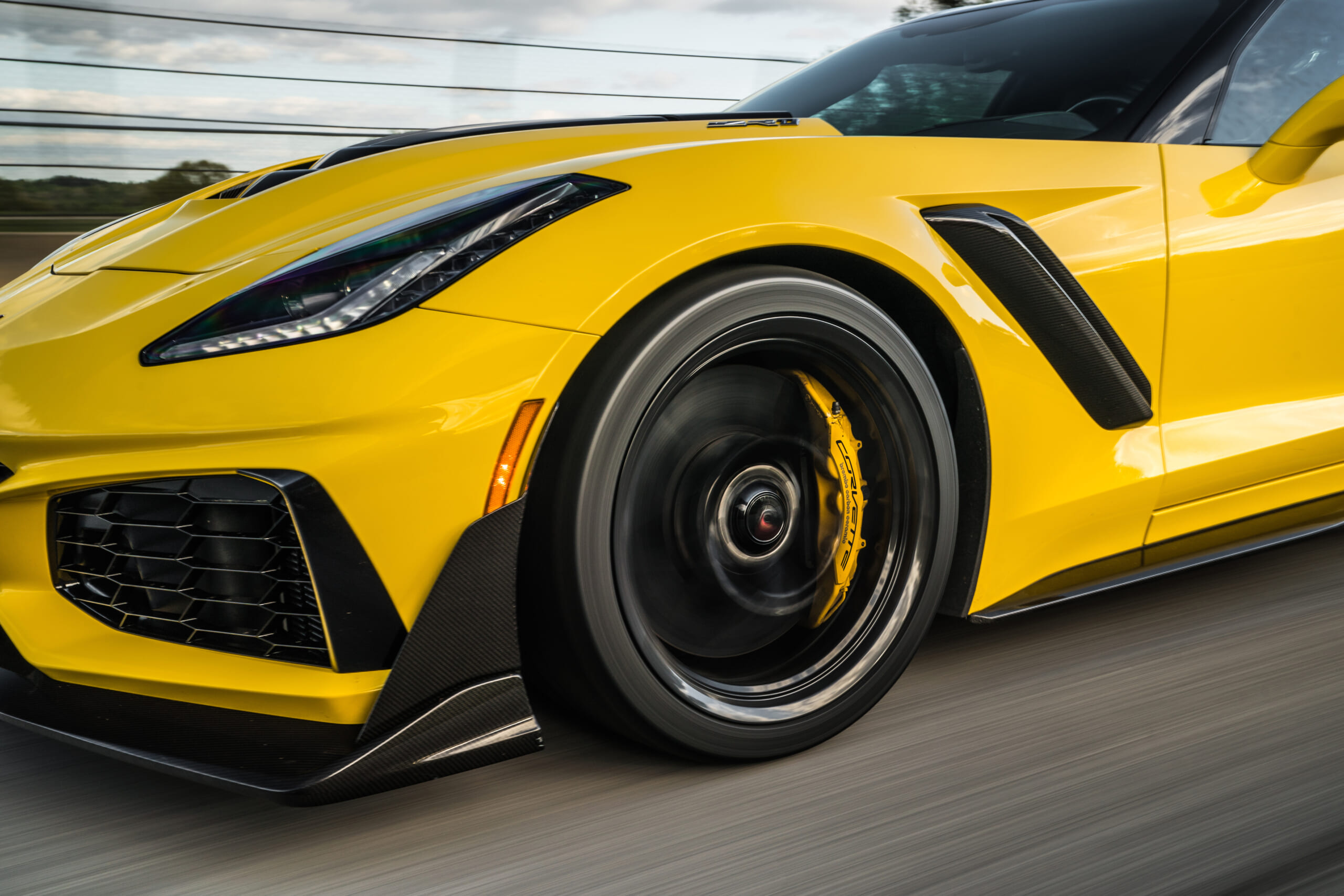
These brakes not only withstood the ZR1’s ferocity on the race track, but they also are utterly docile on the street, with none of the squealing, grinding or propensity to be grabby at low speeds that we saw on the Ferrari 488 Pista.
The ZR1 blasts to 60 mph in 2.85 seconds and rips the quarter-mile in 10.6 seconds at 134 mph. On the undulating circuit at Road Atlanta, we hit a top speed of 159 mph before having to brake for a chicane at the end of the track’s back straight.
The top-of-the-line Corvette feels absolutely mighty prowling the track. The V8’s rumbling sound track serves to encourage delinquency, but the sticky Michelins and an engine management computer programmed to reduce torque output in the lower gears help keep the ZR1 pointed in the intended direction while the driver is stoking coal onto its fire as furiously as possible.
The 950 pounds of aerodynamic assistance is also noticeable, most obviously in Road Atlanta’s terrifying downhill turn 15 onto the front straight and on the courage-checking turn one up the hill at the opposite end of the same straight.
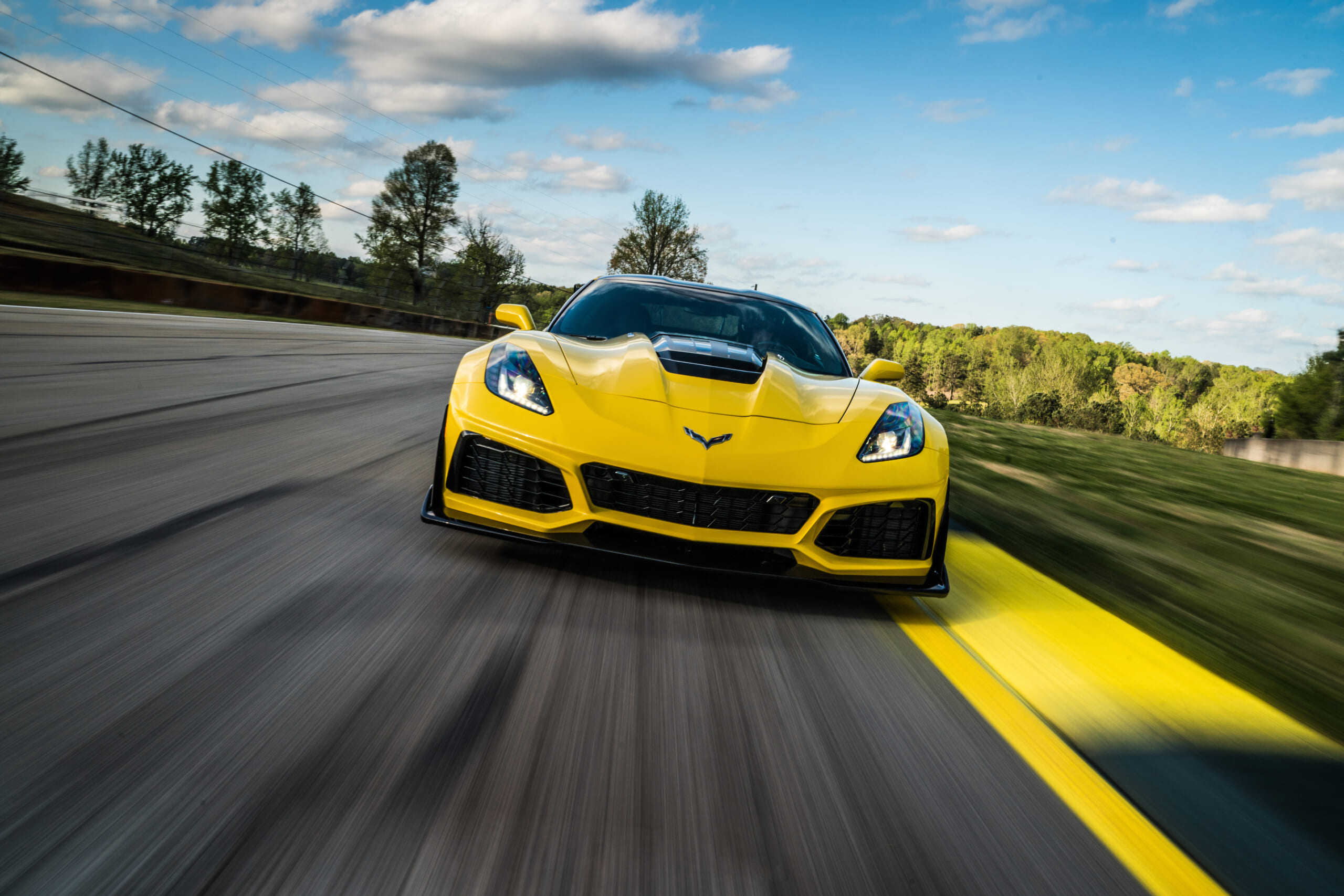
The grip provided by the wings and tires is incredible, and it instills tremendous confidence that the car will never betray the driver. This could make it easy to get in over your head, but some aspects of the ZR1’s power deliver prove to be self-limiting.
Run wide over a curb at the corner exit and hammer the throttle and the LT5 small block spins the rear tires, so the car won’t accelerate until the rubber is back on the proper asphalt and not skimming along the concrete exit apron.
Acceleration is more explosive with the 8-speed automatic transmission thanks to its extra gear, lower ratios and the torque-multiplying effect of the torque converter. The 7-speed manual transmission is a blessed throwback to times when drivers had to drive, even if the automatic-equipped car is faster on both road courses like Road Atlanta and at the drag strip.
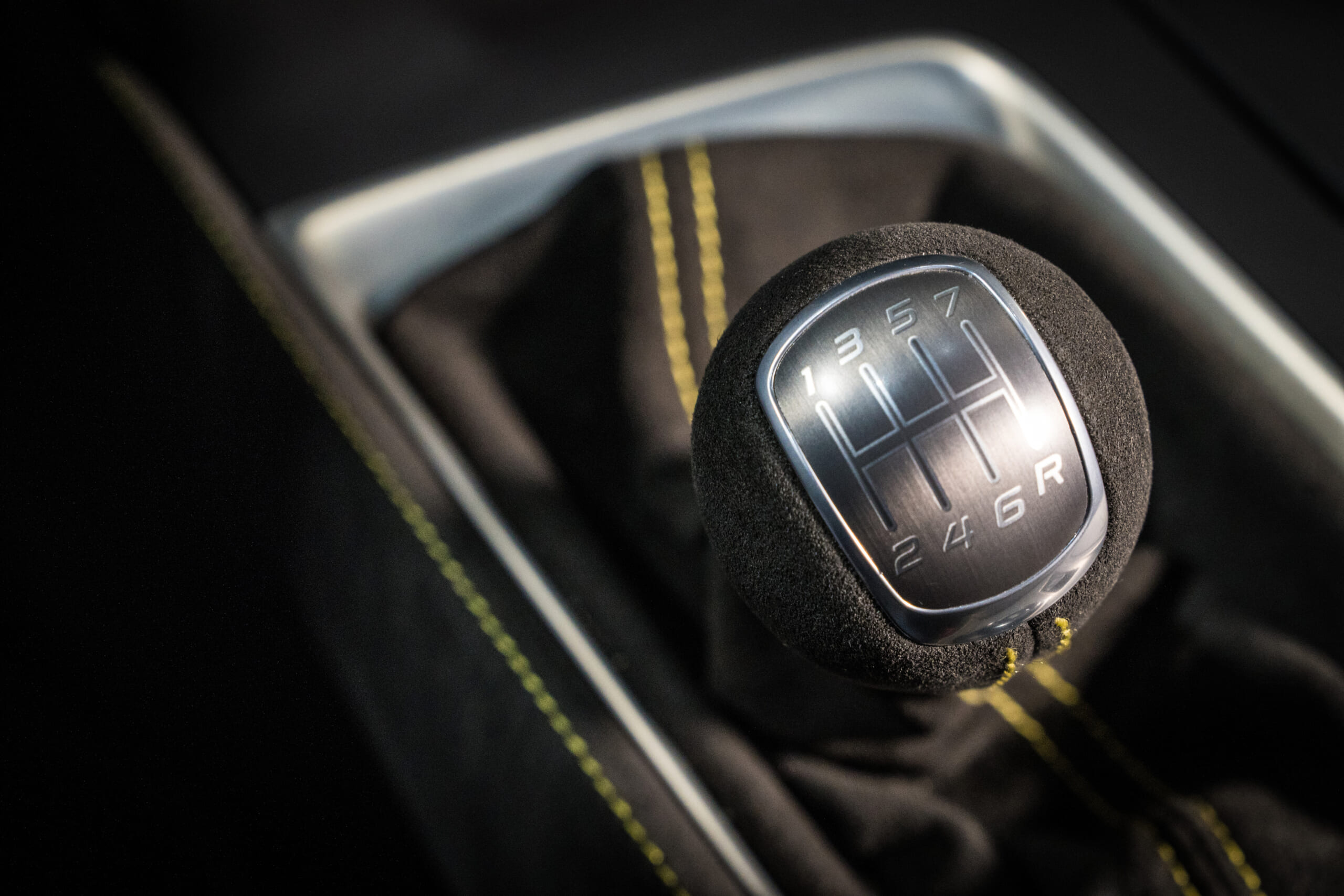
The automatic’s programming proved spot on while driving in Track mode on the race track and in both Sport and Touring on the road, so the steering wheel-mounted shift paddles proved truly redundant. The classic planetary automatic transmission is an area where General Motors is world class, and the transmission’s performance in this application is perfectly executed, as it greases fast, smooth shifts in all situations.
Foreign car snobs will insist, against all evidence, that dual-clutch automated manual transmissions are better. They aren’t, even if famous YouTube car-reviewing personalities say otherwise (Looking at you Doug DeMuro 😉).
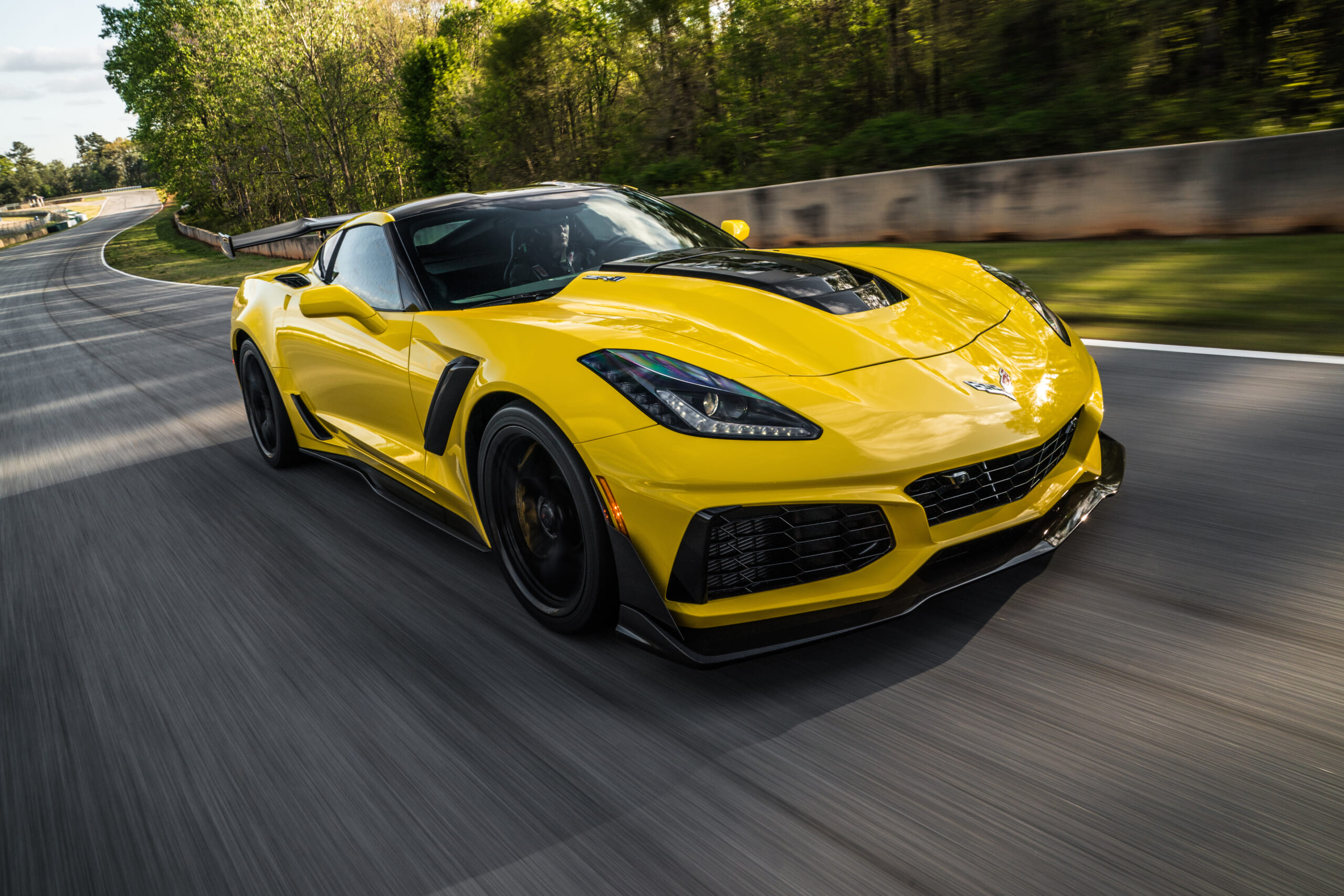
The manual is still more fun. With seven forward speeds, the shifter’s gates get pretty crowded, so shifts are best made deliberately to minimize instances of aiming for one gear and hitting other one by accident. The ZR1 has rev matching for downshifts, which traditionalists can deactivate, if they want to go slower.
Another concession to customer requests in addition to the automatic transmission is the ZR1’s available convertible top ($4,000). The convertible’s 204 mph top speed is reduced from that of the coupe, with the top up. How fast will it go with the top down? “We don’t know,” Juechter replied. None of the company’s engineers were interested in performing that particular test.
One might expect, reasonably, that such a high-strung racetrack thoroughbred as the ZR1 would be pretty challenging to live with on the street. Remember how hot and stiff and difficult the Viper was? But that isn’t the case here.
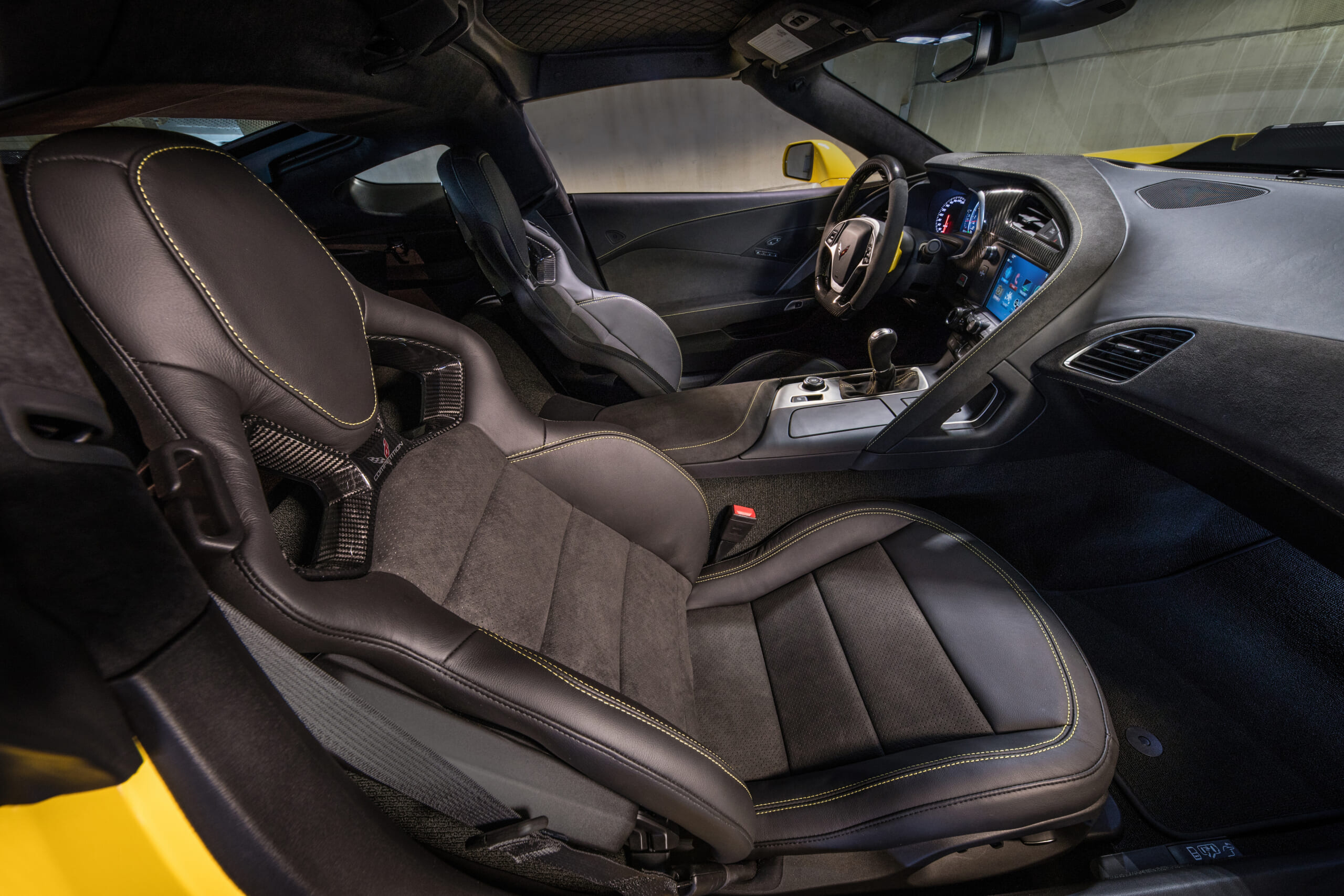
As with the Z06, the ZR1 is as utterly docile in street driving as your mom’s Accord. The throttle meters smoothly in response to pressure on the gas pedal, with no ridiculous on/off light switch reactions that some manufacturers think are appropriate for sporty cars.
That raucous exhaust that earns the America’s Loudest title when driven flat out on the track, automatically hushes its voice when driving more gently thanks to a patented variable flow device that bypasses the car’s mufflers at full throttle and progressively applies more muffling as the driver eases off the gas.
The aforementioned Brembo carbon ceramic brakes reveal their true nature only in the on-track effectiveness, not by their street-going sound or response to pedal pressure.
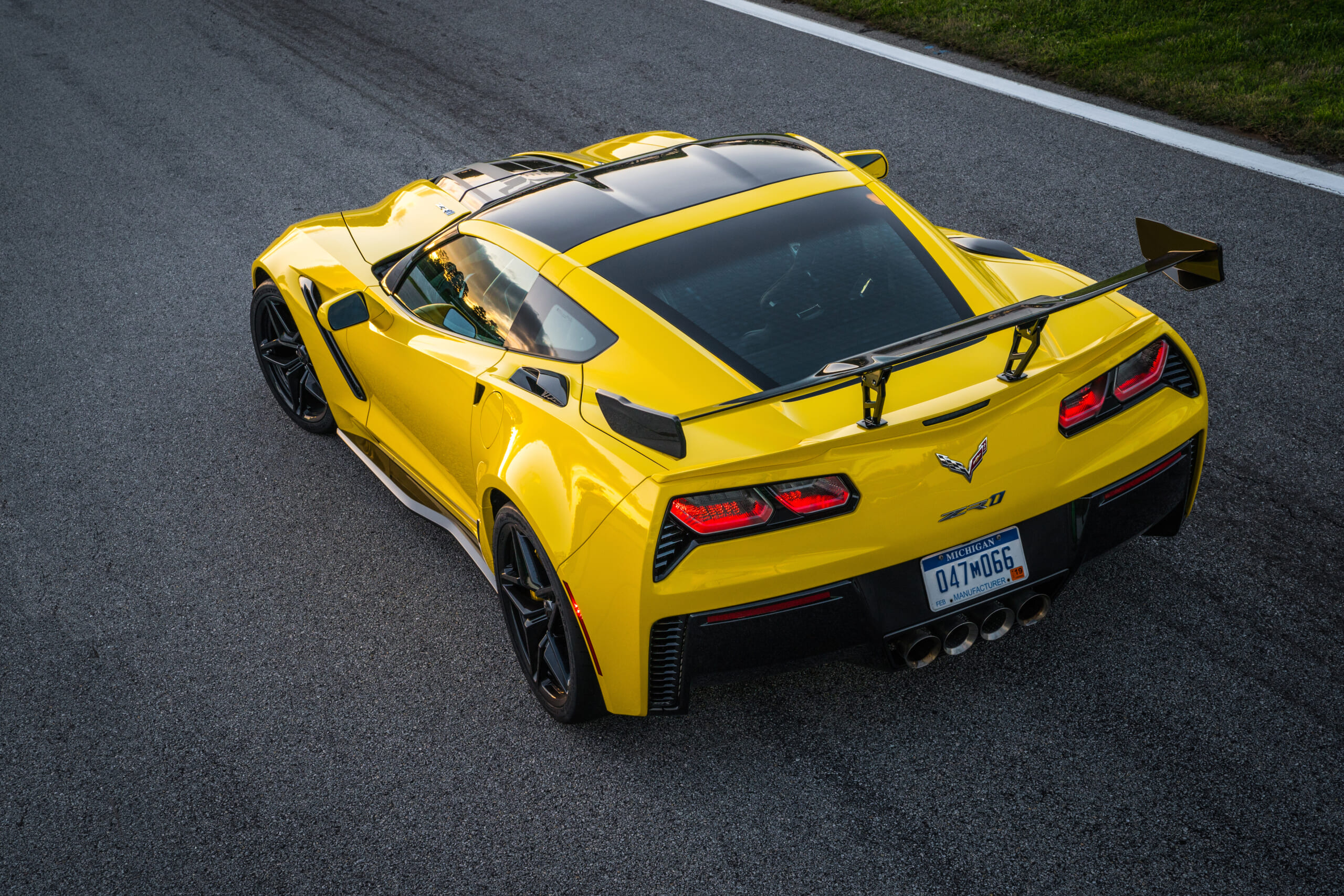
All that delicate carbon fiber aerodynamic bodywork? Chevy guards its welfare with a phalanx of parking cameras that provide both close-up views of curbs and an overall birds-eye view of the car’s position to help drivers keep the carbon fiber in one piece while parking at Target.
The ginormous Michelins do generate substantial noise at highway speed even on smooth pavement, so be prepared for a tiresome drone when traveling in the ZR1.
Otherwise, life inside the ZR1 is comfortable. The car’s seats are far cushier than the wanna-be race seats typically installed in such stratospheric performance cars. Where those machines’ seats seem to have been sourced from The Pit of Despair, the ZR1’s are day-long comfortable.
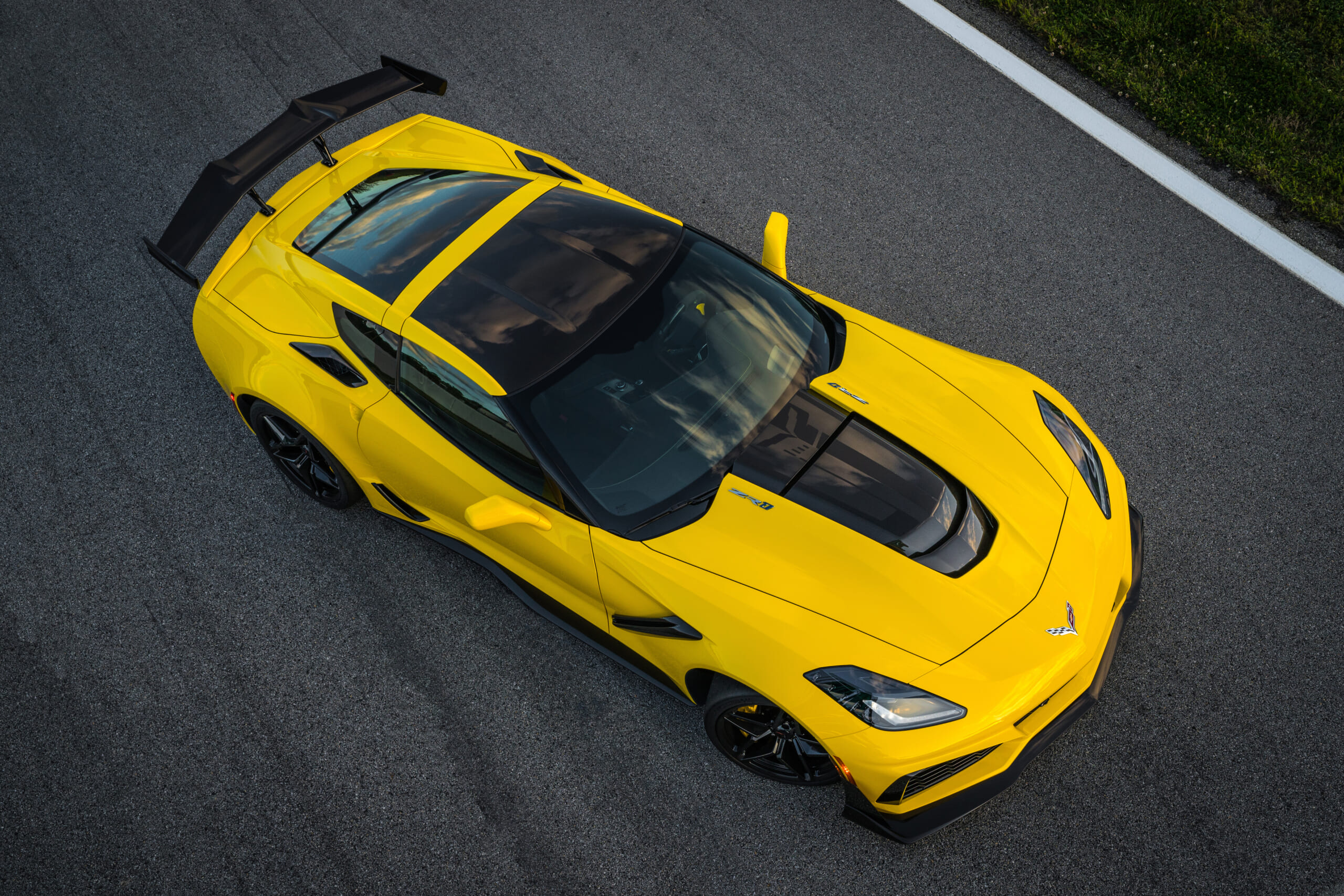
Their corresponding lack of lateral support for holding the driver in place during the ZR1’s 1.25-G cornering on the race track was a source of complaint from colleagues who evidently failed to employ the Corvette’s intended driver restraint. Like all Corvettes the ZR1 has a racheting seat belt mechanism.
These are normally used to cinch child safety seats into place, but in a Corvette, you slide the seat back, pull the seat belt all the way to engage the racheting lock, and then slide the seat forward until you’re squeezed as effectively into the seat as Corvette Racing driver Tommy Milner when he won the Sports Car Grand Prix of Long Beach last week.
The Testor’s model glue aroma that has permeated Corvettes since time immemorial is now blessedly absent, eliminating that subconscious cue that has previously undermined the car’s stake on claims of prestige.
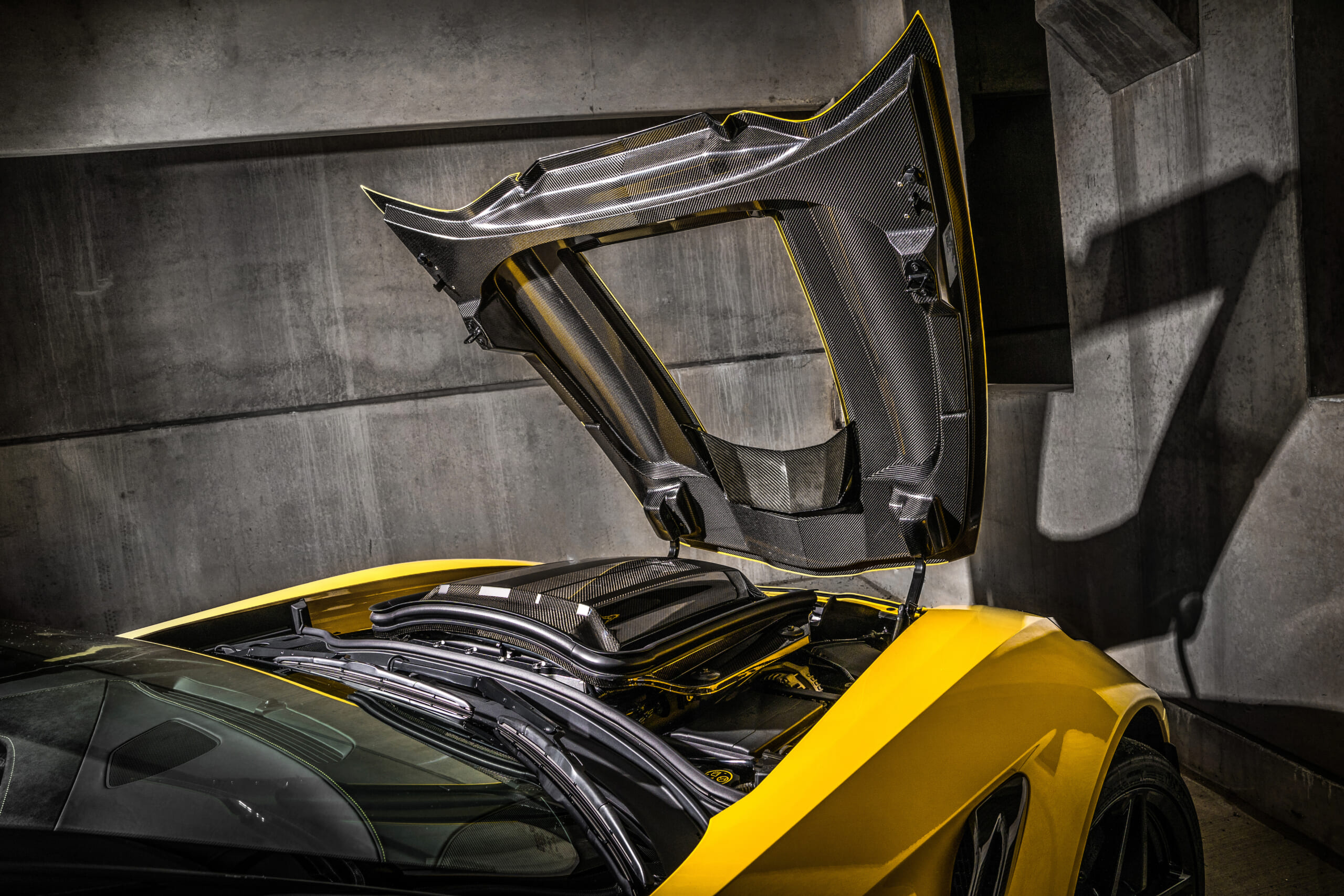
With a base price of $120,000, nobody wants to have their car’s premium atmosphere undercut, so this is an important step, even for a car that can defeat half-million-dollar exotics on the track. The price tag on our Torch Red street test car totaled $141,500, thanks to goodies like the Track Performance Package and Competition Sport Seats.
The ZR1 is already in production and they’ve begun to reach customers. You know where your Chevy dealer is, get over there. Just stay clear of the car’s fire-breathing tailpipes. They are literally 800 degrees.


